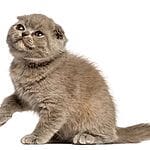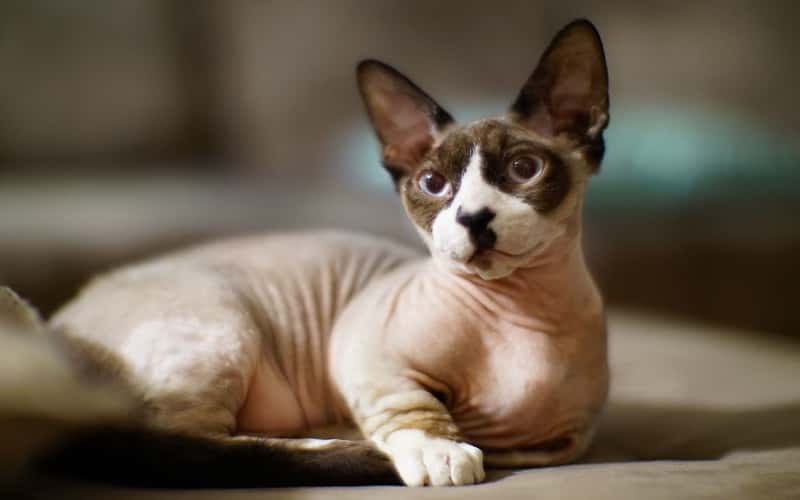European Burmese – Mixed Cat Breed Characteristics & Facts

The European Burmese exudes the charm and tenacity of his Siamese ancestors, and despite his propensity to rule the home with an iron paw covered in plush fur, he has a soft, sweet voice. See all the characteristics of European Burmese below!
European Burmese Mixed Cat Breed Picture




European Burmese – Mixed Cat Breed Characteristics
Affectionate with Family | ***** |
Amount of Shedding | ** |
General Health | * |
Potential for Playfulness | ***** |
Tendency to Vocalize | * |
Kid-Friendly | ***** |
Friendly Toward Strangers | ***** |
Easy to Groom | ***** |
Intelligence | ***** |
Pet Friendly | ***** |
Vital Stats:
| Life span: | 10 to 15 years |
| Length: | Medium |
| Weight: | 6 to 10 pounds |
| Origin: | Burma and Thailand |
History
The Siamese and the “copper cat” of Burma (currently known as Myanmar) are the ancestors of the Burmese. They are believed to have been cats that priests bred and kept in temples and palaces. The small, dark-brown cat Wong Mau served as the matriarch of the contemporary Burmese. She belonged to Dr. Joseph Thompson, who, depending on which version of the tale you buy, either bought her from a sailor or brought her back himself from his travels. At first, people believed Wong Mau to be a Siamese cat with a chocolate-colored coat.
These Siamese were not uncommon. In the 1880s, “chocolate Siamese” were discussed. Their points were seal-brown or almost black, and their bodies were tan or brown. The seal-point Siamese, also known as the royal Siamese, were favored by breeders and the general public due to their lighter bodies that contrasted with their dark points.
The chocolate-colored cats eventually vanished from Britain, but they persisted in Thailand and Burma. These cats were likely the result of spontaneous unions between stray Siamese (pointed) and solid-colored Burmese cats, as opposed to human-instigated unions. One of them was Wong Mau.
She was destined to lead two new breeds—the Burmese and, later, the Tonkinese—as their matriarch. Dr. Thompson crossed Wong Mau with Tai Mau, a seal-point Siamese. His breeding program produced kittens with beige, brown, and pointed coats in collaboration with breeders Virginia Cobb, Billie Gerst, and geneticist Clyde Keeler.
The findings, which included the identification of the Burmese gene, were so fascinating that Thompson wrote the first article on feline genetics and published it in the Journal of Heredity. The Burmese cat breed was created from the brown variety.
Burmese were first registered by the Cat Fanciers Association in 1936, but registrations were suspended in 1947 due to breeders continuing to use Siamese in their breeding programs. 1953 saw the start of registrations again after the practice was stopped. However, the development of the Burmese took a different course in Europe.
Redpoint Siamese and British Shorthairs were used in breeding programs in Great Britain, where there was an even greater lack of breeding stock than there was in the United States, and their genetic contribution included additional colors: red, cream, brown-tortie, chocolate-tortie, blue-tortie, and lilac-tortie. Later, they were referred to as Foreign Burmese or European Burmese.
Size
This medium-sized cat typically weighs six to ten pounds, but occasionally more.
Personality
The personalities of Burmese people and those from Europe are similar. The Burmese people of Europe are cheerful and vivacious. His voice is soft and sweet, belying his propensity to rule the home with an iron paw covered in velvety fur, but he has the charm and tenacity of his Siamese ancestors and enjoys conversation as much as that breed.
He is extremely intelligent and craves human company, so a home where he will spend most of the day alone is not the best place for him. Make sure he has a pet companion if no humans will be present to challenge his intellect. He gets along well with both dogs and cats, but a Burmese cat or dog will always be his best friend. The European Burmese cat is as inquisitive as they come.
Expect him to thoroughly examine your house and be familiar with all of its nooks and crannies. He is playful and still is as an adult. Use interactive toys to tease his witty mind and teach him tricks so he can perform them in front of people. He can learn to fetch a small toy or walk on a leash in addition to sit, roll over, wave, and come. Early conditioning will make car trips and doctor’s appointments a breeze.
If you don’t mind total privacy invasion, a European Burmese is a good option. This cat will want to be a part of everything you do, from cooking and watching TV to reading the newspaper and using the computer. He will, of course, share your bed with you and may even cuddle up with you at night. He will be in your lap or sitting close to you when you are seated, eagerly awaiting your pettiness. If you don’t listen to him, you’ll get a lecture.
He will give every visitor his undivided attention, and chances are he’ll win over even people who say they don’t like cats. The epitome of a queen is a female European Burmese. She enjoys being the center of attention and in charge. Males are more content to fill a lap and are more restful. Whichever you decide, it’s likely that you’ll start longing for another pretty quickly.
Health
Pedigreed and mixed-breed cats both have varying rates of health issues that could be genetic in origin. Although they can be susceptible to gingivitis and may be sensitive to anesthesia, European Burmese are generally in good health. European Burmese have also been diagnosed with the following conditions:
- When a kitten is young, the eye may temporarily appear milky. This condition typically goes away on its own.
- Surgically correcting corneal dermoid, which is the development of skin and hair on the corneal surface.
- The lack of an enzyme causes gangliosidosis. The disease can now be found using a test that has been created.
- Extreme licking, chewing, and pawing at the mouth are signs of orofacial pain syndrome. When the cat is anxious or excited, the discomfort may worsen, and they frequently avoid eating because it hurts so much. To prevent them from hurting themselves, some cats must wear an Elizabethan collar and have their paws bandaged. Some situations end on their own, then come up again. It is unknown what causes and how inheritance occurs. In order to rule out dental disease, consultation with a veterinary dentist as well as painkillers and anti-seizure medications may be helpful.
- Congenital peripheral vestibular disease in kittens results in head tilting, shaky balance, jerky eye movements, and clumsy walking. Deafness in some affected kittens is also possible.
- Burmese kittens occasionally exhibit hypokalemic polymyopathy, a muscle weakness brought on by low potassium levels in the blood. Generalized weakness, a stiff gait, reluctance to walk, and head tremors are symptoms. Oral potassium supplements can be used to treat it.
- Flat-chested kitten syndrome is a birth defect that can range in severity. When they are mature, kittens who live to adulthood typically don’t exhibit any signs.
- Kinked tail, typically as a result of a tailbone deformity. There is no discomfort or pain from it.
- Elbow osteoarthritis, a form of early-onset arthritis, restricts the cat’s movement or activity.
- Endocardial fibroelastosis is a condition of the heart where the left ventricle thickens and the heart muscle is stretched. It is best to wait until a kitten is 4 months old before bringing it home because signs typically appear between 3 weeks and that point.
- Heart enlargement caused by dilated cardiomyopathy.
- Diabetes mellitus is an endocrine disorder that results in elevated blood sugar levels and is brought on by a problem with insulin secretion or action.
Care
The European Burmese’s short, soft coat requires only weekly brushing or combing to remove dead hair and spread skin oil. Rarely is a bath necessary. To prevent periodontal disease, brush your teeth. Although daily brushing is preferred, once a week is still preferable to never. To get rid of any discharge, use a soft, damp cloth to wipe the corners of your eyes.
To prevent the spread of any infection, use a different area of the cloth for each eye. Each week, check your ears. If they appear to be dirty, clean them with a cotton ball or soft, damp cloth dipped in a 50/50 solution of warm water and cider vinegar. Cotton swabs shouldn’t be used because they can harm the ear’s interior. Maintain a spotless litter box. European Burmese cats are extremely particular about bathroom hygiene, just like all cats.
A European Burmese should only be kept indoors to prevent him from contracting illnesses from other cats, being attacked by dogs or coyotes, and other risks that cats who go outside face, like being hit by a car. European Burmese who venture outside also run the risk of being taken by someone who wants to own such a stunning cat but isn’t willing to pay for it.
Coat Design and Maintenance
The European Burmese and the Burmese have other physical distinctions besides color. The European looks more subdued, particularly in terms of head shape. With a body that is less compact but never long and slender like the Siamese, he has a more gently rounded appearance. The ears are widely spaced apart, the top of the head is slightly rounded, and the wide cheekbones taper to a short, blunt wedge.
The eyes are more inclined toward the nose and have a less rounded opening than Burmese eyes. They range in color from yellow to amber. The tips of medium-sized ears are slightly rounded, and they tilt forward slightly. Small, oval paws support slender legs. The medium-length tail has a rounded tip and a slight taper.
The European Burmese is heavier than he appears to be, just like the Burmese, and can also claim to be “a brick wrapped in silk.” He is dressed in a short, satiny coat that is available in ten different hues: brown, blue, chocolate, lilac, red, cream, and tortoiseshell shades of brown, blue, chocolate, and lilac. The body’s underside is slightly lighter than the top, and the coat colors gradually fade to the roots.
Warm orange apricot is the color of the red European Burmese, and the face may have very light tabby markings. Cream-colored cats’ paw pads and nose leather are pink, and they may also have very faint tabby markings. The color blue is the same as in Burmese, and the lilac coat is comparable to the Burmese’s platinum coat. In comparison to chocolate, brown is a warm, rich, seal-brown hue. The entire body of the tortoises is covered in colored patches.
Kids and other animals
The energetic and sociable European Burmese is an excellent choice for households with kids and pets who get along with cats. He can play fetch just as well as any retriever, picks up new tricks quickly, and enjoys the attention from kids who are kind to him. He coexists peacefully with cats and dogs that obey him. To make sure that pets learn to get along with one another, always introduce pets gradually and under controlled conditions.
Creator: PetsCareTip









